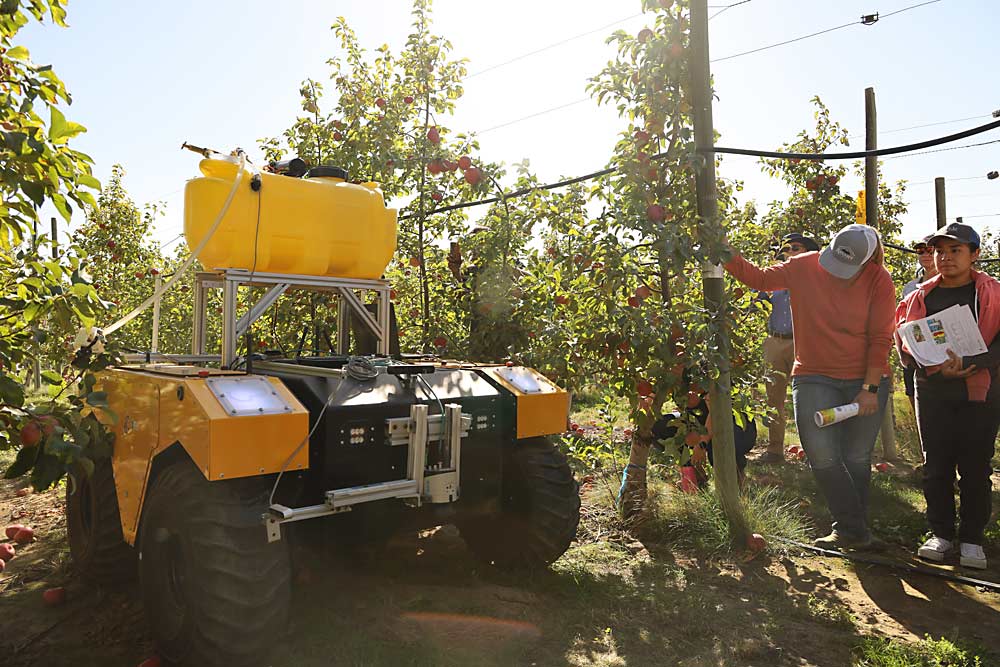
It takes a diverse team of researchers to tackle orchard technology development. So, a diverse team of students, university faculty and technology suppliers spoke at a technology field day organized by Washington State University at its Sunrise Orchard outside Wenatchee on Sept. 15.
The event was hosted with support from the AgAID Institute, a U.S. Department of Agriculture-funded effort aimed at harnessing artificial intelligence technology to provide farmers better decision-support tools. The field day included participation by many of the undergraduate and graduate students working on research projects under the institute’s umbrella.
Institute director Ananth Kalyanaraman, a professor of computer science at WSU, thanked tree fruit industry members for attending the field day and engaging with the research teams.
“We want to make sure what we build is useful,” he said.
Researchers showed off automation tools in development, including a multipurpose robot platform that demonstrated its ability to precisely apply liquid fertilizer and a virtual tree pruning system designed to train algorithms that will eventually guide robotic pruning. These projects, led by teams at Washington State University and Oregon State University, respectively, are part of the labor focus of the AgAID effort and have also received industry support through the Washington Tree Fruit Research Commission.
The Smart Orchard project, which the commission launched in 2020 as a proving ground for precision agricultural technologies, is now coordinating its efforts and sharing data. Extension specialist and field day organizer Bernardita Sallato shared conclusions from the project’s trial of sensors to map soil variability.
The SoilOptix sensor she tested is good technology to identify relative variability in texture and several key nutrients, but it did not replicate traditional soil tests. “It can map variability, but you cannot rely on its absolute values for rates of application you need in your block,” she said.
Jill Tonne of Nutrien Ag Solutions, a fertilizer supplier, spoke about how using the sensor to map variability, combined with soil samples, can be used to set zones for variable-rate fertilizer applications of phosphorus and potassium. “That’s where this pays off; you can get the nutrients where you need it,” she said.
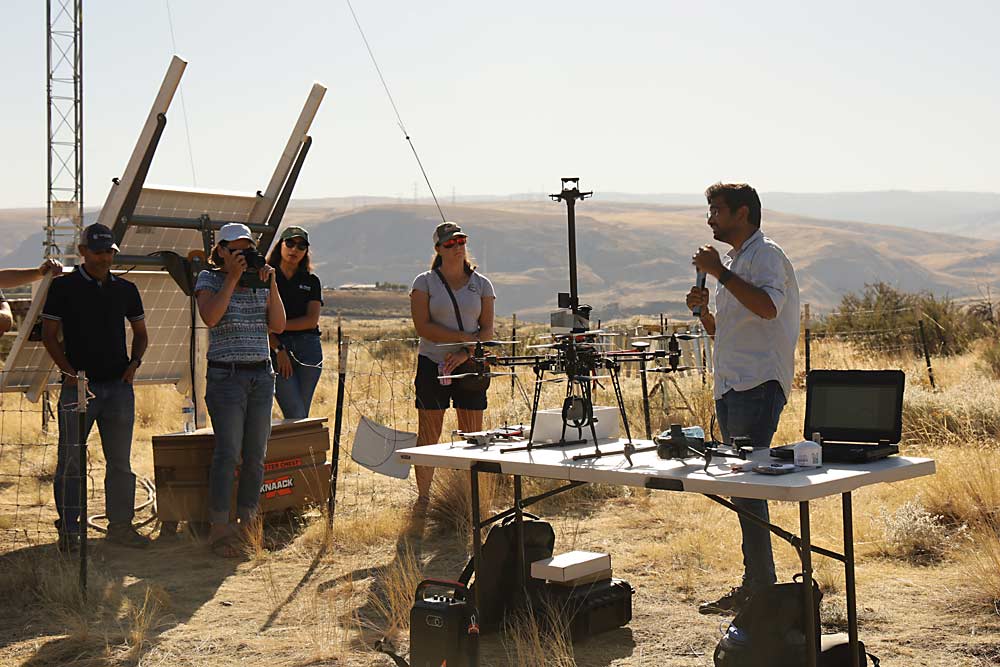
Lastly, attendees visited the AgWeatherNet station next to the research orchard to learn how accurate weather data plays a role in many decision aid models. One project underway uses drones to map cold inversions to better understand frost risk. Graduate students Srikanth Gorthi and Jake Schrader showed off the high-tech drone they use for collecting research data and the low-cost version — with a basic temperature sensor strapped on — that they believe could benefit growers in the future.
—by Kate Prengaman

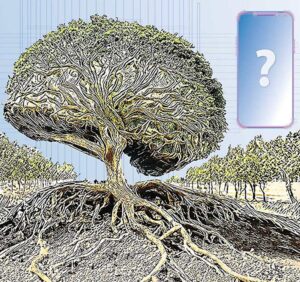
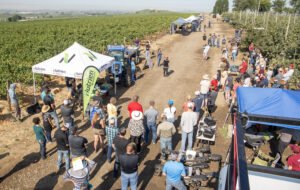
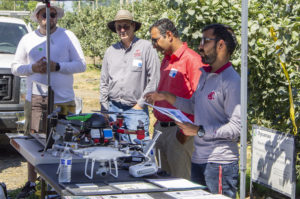





Leave A Comment